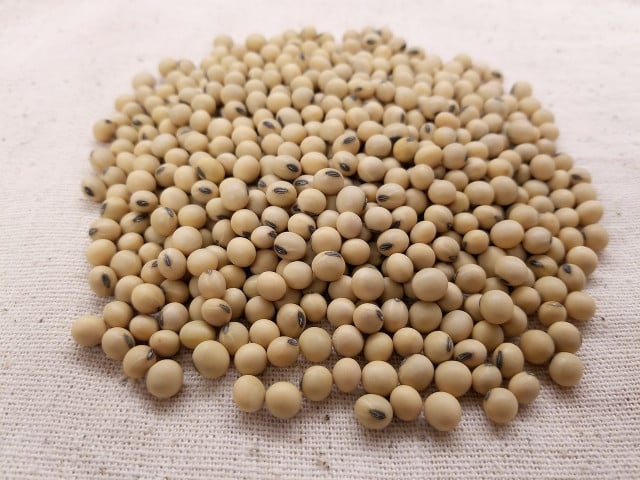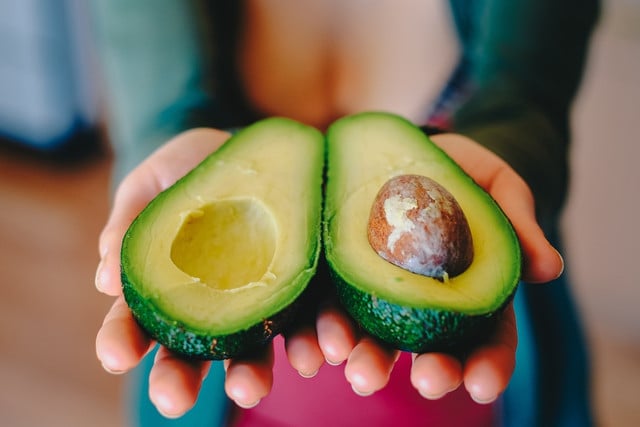What we eat has a significant effect on our health and on the world around us. We’ll discuss 15 controversial foods that you might be surprised to find arouse debate.
These days we can find pretty much any foods we want at the supermarket, but at what cost to the environment or animals that we share the planet with? There are many issues to consider when food is produced, such as climate emissions, water pollution and consumption, biodiversity loss, pesticide use and packaging.
We’ll look at 15 controversial foods that have a surprisingly large impact on the environment or animals so that you can make informed choices as to what extent to include them in your diet. Remember, purchasing power is important!
1. Foie Gras
Foie gras, or “fatty liver,” is the liver of a goose or duck, which is unnaturally fattened to up to ten times its normal size due to force-feeding for two weeks. It is only possible to get foie gras from force-feeding; this causes injury to the esophagus, panting and diarrhea and sometimes liver failure. Fois gras production is banned in many European countries. It gets its hefty price due to how it’s produced, at $40-80 per pound.
2. Controversial Foods: Shark Fin
According to a 2022 research paper, the global demand for shark products has caused shark populations to decline by up to 70 percent. The study surveyed shark fin soup in Singapore and found a number of endangered species in the soup, plus high levels of mercury, which can cause serious health problems in humans if consumed frequently. Sharks are captured at sea, their fins removed, and their live bodies are thrown back into the sea. Shark finning is banned in the waters surrounding countries like New Zealand and Panama. Other countries have put in place regulations to prevent finning at sea.
3. Bird’s Nest Soup
Edible bird’s nests are created when male swiftlet birds use their glutinous saliva to make a cup-shaped nest. The nests are then boiled with rock sugar to make bird’s nest soup. It is the most expensive animal by-product in the world, at $2,000-10,000 per kilogram. It is believed to have numerous health benefits, such as boosting immunity, improving skin complexion and being high in calcium and potassium. Nests can be harvested in captivity or from the wild, where nests are often removed before eggs have been laid — or baby birds may be thrown away. This has led to a reduction in swiftlet populations and certainly makes this a controversial food.
4. Caviar
Caviar is the salt-cured roe, or eggs, of fish from the sturgeon family. Due to unsustainable farming and overfishing, there has been a drop in wild sturgeon numbers recently, leading to the species being added to the Convention on the International Trade in Endangered Species and a shift to farmed caviar. This controversial food fetches a high price due to its limited supply.
5. Controversial Foods: Civet coffee

(Foto: CC0 / Pixabay / naveensharma94166)
Civets are a mammal that looks a bit like a cat. Palm civets from Indonesia are fed raw coffee beans which they then digest. The beans are removed from their feces and sold as luxury coffee. The taste is unique due to the change in acid content — it is promoted as the best coffee in the world. A 2016 study found captive civets often live in poor conditions like unclean enclosures, tiny cages and on unnatural diets.
6. Beef



(Foto: CC0 / Pixabay / RitaE)
Cattle are a huge contributor to global greenhouse emissions. An FAO report found that cattle (beef and dairy) are responsible for around 65 percent of the livestock industry’s greenhouse gas emissions. This is from the methane in cow manure, which takes up a whopping 44 percent of these emissions — compared to five percent of carbon dioxide.
Furthermore, beef production in developing countries often involves clearing vast swathes of forest, leading to water pollution and biodiversity loss. If beef cattle are fed soy, it contributes to its environmental impact. As we mentioned, cattle fed on grassland have a lower carbon footprint than their soy-meal-fed counterparts. Check for “grass-fed” wording in the packaging, ensuring it has been certified by USDA or AGW. However, this will not affect the cow’s methane output.
There are plenty of plant-based meat alternatives out there. Check out these recipes for vegan ground beef and vegan corned beef to steer clear of this controversial food.
7. Cow’s Milk



(Foto: CC0 / Pixabay / Couleur)
This controversial food still isn’t on many people’s radars. Similar to humans, cows can only produce milk after being pregnant. Female cows are artificially inseminated and give birth at around nine months. Then, their calves are taken away from them within 24 hours. The cows must give birth every year to continue to produce milk, and are often artificially inseminated again three months or less after giving birth.
Aside from the ethical questions about dairy milk, there are some environmental concerns too. A massive amount of land and freshwater is used to rear dairy cattle; for example, producing one liter of dairy milk requires almost nine square meters of land, whereas almond milk needs just half a square meter to yield the same amount. Similarly, dairy milk production omits the highest levels of greenhouse gas emissions, at 3.2 kilograms per liter of milk produced, compared to only 0.7 kilograms per liter for almond milk.
There is plenty of plant-based milk available, such as oat, almond, coconut, potato and hemp. The environmental impact of each differs greatly but is still significantly less than dairy milk. Check out this handy guide on what is the best plant-based milk.
8. Controversial Foods: Palm Oil



(Foto: CC0 / Pixabay / allphotobangkok)
Palm oil is made from the fruit and seeds of oil palm trees. It is used in many processed foods like cookies, bread, potato chips and ice cream, as well as in beauty and personal hygiene products. Palm oil is also used as a biofuel.
Palm oil plantations require vast swathes of virgin rainforest to be cleared to make way for monoculture palm forests. Not only does this reduce the habitat for many endangered species, the monoculture of these plantations means that other species of plants struggle to grow there, resulting in colossal biodiversity loss. Find out more about why palm oil is not sustainable and its environmental impact.
Although a few brands of palm oil claim to be sustainable, this is difficult to verify. The Roundtable on Sustainable Palm Oil (RSPO) is a non-profit organization that aims to bring together oil palm producers, processors, consumer goods manufacturers, retailers, banks and investors, and environmental and social NGOs to maintain global standards for sustainable palm oil.
The RSPO is backed by the WWF and the Rainforest Alliance. So, as far as palm oil goes, if it can’t be avoided, it’s best to choose products that are certified by them.
9. Packaged Salad



(Foto: CC0 / Pixabay / Zotx)
Packaged salad is a surprise entry on the list of controversial foods. It comes in plastic packaging and has a very short shelf life; therefore, much of it ends up in landfills. It is often grown in greenhouses under LED lights that consume a considerable amount of energy — plus, it has to be transported in cool conditions, giving it a high carbon footprint. Don’t forget the amount of water used in the processing phase for washing and cleaning.
A summer solution is to buy whole, locally grown lettuce. In winter, switch to cabbage or other winter vegetables. Why not grow your own instead? Learn how to find, grow and use salad burnet.
10. Soya



(Foto: CC0 / Pixabay / egroll)
Soybean farming has many adverse environmental impacts. The WWF states that the soybean industry “is causing widespread deforestation and displacement of small farmers and Indigenous peoples around the globe”. That’s because soy crops are often grown continuously in a monoculture.
However, it’s important to note that the majority of soya consumed on the planet is actually made into a protein-rich soy meal for livestock consumption. Only around six percent of globally produced soya is consumed by humans. Sustainable sources are available, like those certified by the Roundtable on Responsible Soy. Alternatively, choose soy grown in the US. It’s difficult for the consumer to know what feed livestock was fed, making this another reason to avoid meat and dairy.
11. Controversial Foods: Chocolate



(Foto: CC0 / Pixabay / StockSnap)
As it doesn’t contain milk, you may think that dark chocolate has a low carbon footprint. Unfortunately, that’s not true due to how cocoa is produced in many countries. As with palm oil and soy plantations, a lot of land is deforested to make way for cocoa plantations. In fact, chocolate takes second place in the ranking of foods causing highest greenhouse emissions (beef is first). That’s because of how the cocoa is planted and the soy and palm oil often contained in chocolate bars — both have a substantial environmental impact.
Most chocolate consumed worldwide is made from cocoa beans grown in Africa, as in Ghana and Côte d’Ivoire. This raises ethical questions about whether farmers and employees on cocoa farms are compensated fairly for their products. So, it’s essential to choose Fair Trade-certified certified chocolate.
12. Cheese



(Foto: CC0 / Pixabay / AnthonyArnaud)
Cheese is processed from cow’s milk, which is environmentally damaging due to the greenhouse gas emissions released during the cattle-rearing process (see point #7). Actually, cheese fares worse than milk on the scale of foods with the highest greenhouse emissions — it has the highest demand for water and energy for all dairy products. That’s because of the large amount of water needed during the cleaning process and the energy used for chilling and transporting. Instead of cutting out cheese completely, try these homemade vegan cheese substitutes.
13. Eggs



(Foto: CC0 / Pixabay / geralt)
Many factors contribute to egg production’s environmental impact, including bedding materials, heating devices and type of feed. The feed and manure lead to unnecessary carbon and nitrogen emissions, and bedding and manure can cause water and air pollution. That makes eggs an unfortunately controversial food — maybe easier to digest considering the skyrocketing price of eggs!
Check out Utopia’s articles about battery eggs and if cage-free eggs are a sustainable choice, and learn more about vegan egg substitutes.
14. Controversial Foods: Avocados



(Foto: CC0 / Pixabay / coyot)
Avocados on American supermarket shelves are usually imported from Mexico or other central and south American countries. This means long transportation routes in chilled conditions consuming a huge amount of energy. Secondly, avocado trees need a substantial amount of water. One 2011 satellite study in Chile found that vast amounts of water were diverted away from rivers to irrigate avocado plantations, thus affecting water availability for the local population.
However, it is possible to find Californian-grown avocados, or those grown out of season. Look for Fair Trade avocados, but remember, those are still imported from Mexico. Instead of using avocados, check out these eight avocado substitutes for sandwiches, salad and more.
Read more:
- Make the Cowboy Caviar Dip Everyone’s Talking About
- 5 Best Vegan Egg Substitutes for Pancakes + Recipe
- Potato Cheese Recipe: The Cheapest Vegan Cream Cheese
Do you like this post?








